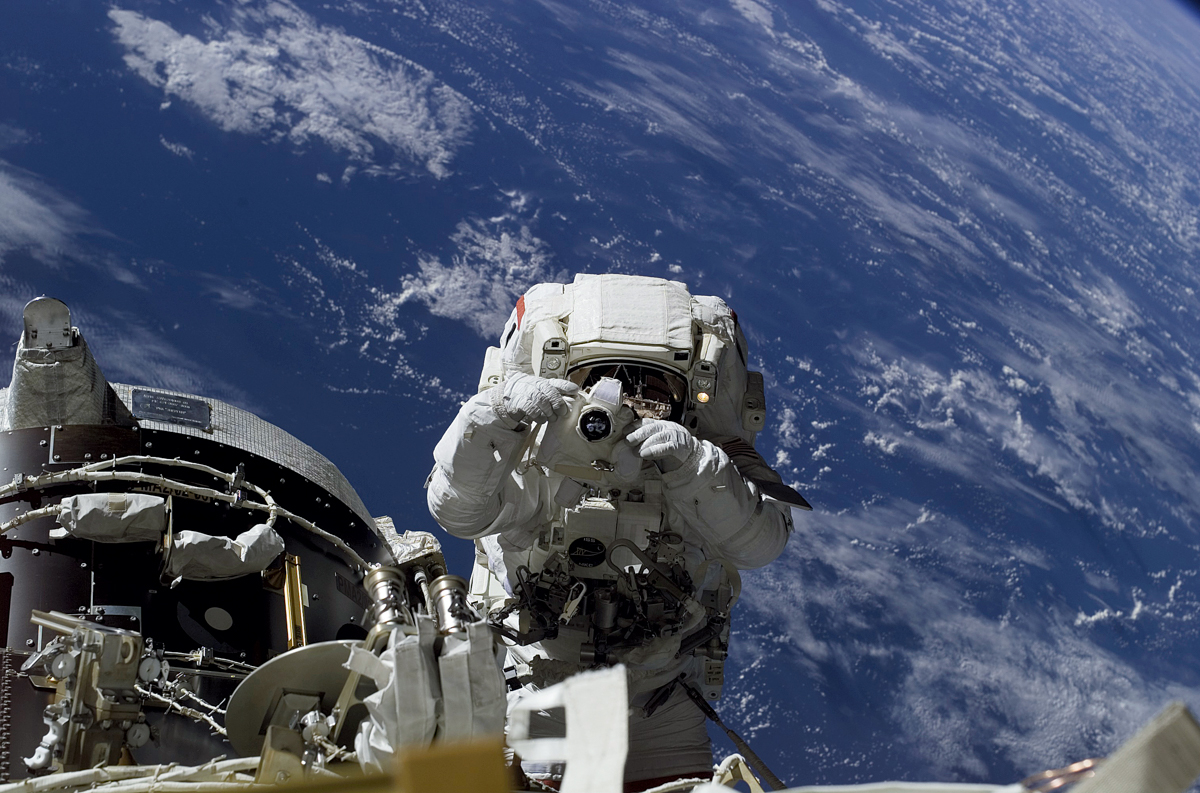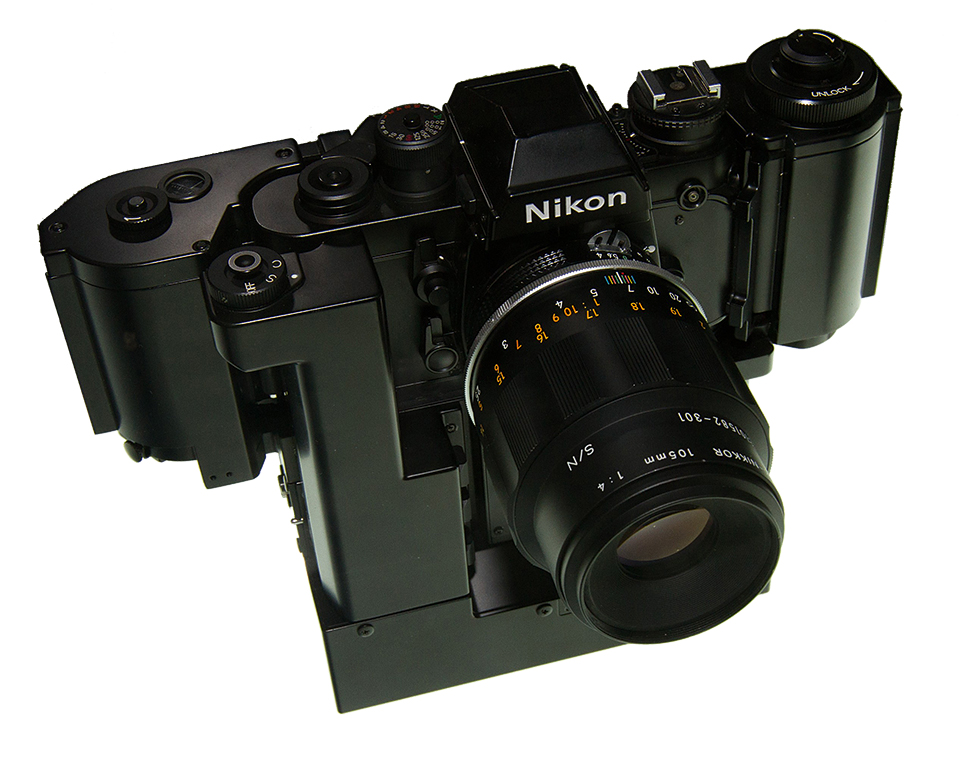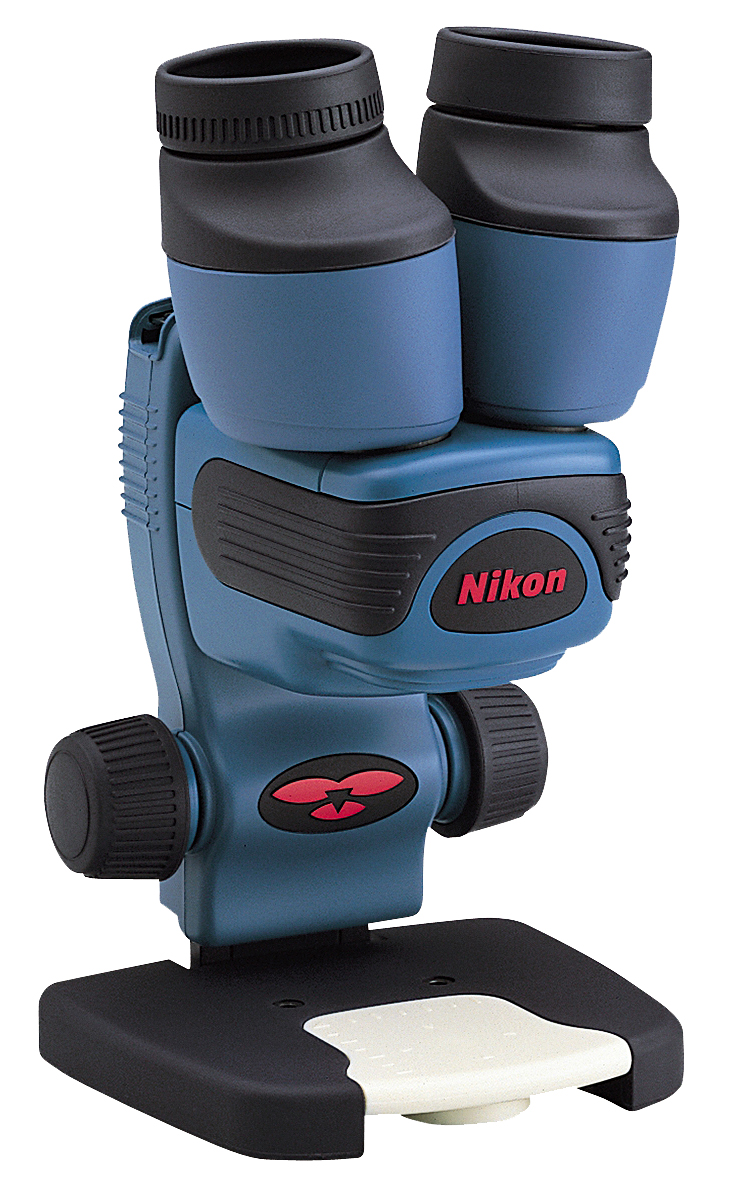Nikon in space

Nikon’s journey into space began in 1971, when the Nikon Photomic FTN was used on the Apollo 15 mission. Up to this point, NASA had stuck with Hasselblads and 70mm film, but required a more portable solution. Nikon has been NASA’s go-to 35mm system since then.
In the late ’70s, Nikon worked on two NASA-modified versions of the F3 for use in the Space Shuttle program. Production was carried out alongside the development of the consumer F3, which had yet to be released.
The ‘Small Camera’ was equipped with a motor-drive and was capable of holding up to 72 frames per film.
There was also a ‘Big Camera’ (pictured below) that had a large 250-exposure film back that could be loaded with thinner long film. It had a dark slide that allowed astronauts to remove the film back in the middle of a roll and switch to a back loaded with different film.

Out of this world
On September 1991, a modified version of the Nikon F4 was taken into space on Space Shuttle Discovery. The Nikon NASA F4 Electronic Still Camera was one of the first digital cameras in the world – and out of it.
The Nikon F4 had already established itself as the next-generation professional SLR, with its cutting-edge autofocus, built-in motor-drive, Matrix metering and a host of electronics, but the NASA F4 added a digital camera back with a one megapixel monochrome CCD sensor at the film plane.
Get the Digital Camera World Newsletter
The best camera deals, reviews, product advice, and unmissable photography news, direct to your inbox!
Some of the NASA F3 Small Cameras were reportedly lost in space – and are presumably still circling the Earth at several thousand kilometres per hour…
Nikon’s relationship with NASA has continued into the digital age, with NASA requesting D2Xs DSLRs in 2008, followed by D3s bodies in 2009 for use in recording activities aboard the Space Shuttle and International Space Station.
By 2010, the ISS was starting to resemble a zero-gravity Grays of Westminster, with an unmodified D3s, eight D2Xs bodies modified for EVA (Extravehicular Activity), four D2Xs eyepieces for framing through a space helmet, seven SB-800 Speedlights and 36 Nikkor lenses (including three teleconverters) floating around. At that point, NASA had captured more than 700,000 images with Nikon equipment that had been carried into space.
These days, you’re more likely to see the D4 in the hands of ISS astronauts, perhaps fitted with a Nikkor 800mm f/5.6E FL ED VR twinned with the Nikon AF-S FX TC-14E III 1.4x teleconverter, to give the equivalent view of 1120mm.

5 things Nikon has given the world of science
Microscope development
Nikon designed its first microscope, the JOICO, in 1925 with a staggering 765x magnification. Nikon also released Japan’s first stereoscopic microscope (1954), the Fieldmicroscope (1996) pictured above, plus the BioStation CT cell culture observation system (2007) – used in an incubator so that the growth of live cells can be observed.
Test-tube babies
The world’s first test-tube baby, Britain’s Louise Brown, was conceived with the assistance of a Nikon microscope – as was the US’s first test-tube baby, Elizabeth Carr. In the ’90s a Nikon Diaphot microscope assisted in cloning Dolly the sheep, the first mammal cloned from an adult cell.
Astronomy in Japan
Nikon’s first 20cm equatorial refracting telescope was positioned in the roof observatory dome of the Tokyo Science Museum in 1931. It remained in service for more than 70 years.
Space telescope
On 14 September 2013, the Japan Aerospace Exploration Agency (JAXA)launched Hisaki, the world’s first space telescope dedicated for remote observation of planets, including Venus and Mars. Nikon provided the primary 20cm silicon carbide mirror for the telescope.
The Small World Competition
Since 1975, Nikon has organized the International Small World Competition –
a celebration of microscope photography.
N-Photo: The Nikon Magazine is a monthly publication that's entirely dedicated to Nikon users. As a 100% independent magazine, you can be assured of unbiased opinion from a trustworthy team of devoted photography experts including editor Adam Waring and Deputy Editor Mike Harris.
Aimed at all users, from camera newcomers to working pros, every issue is packed with practical, Nikon-specific advice for taking better photos, in-depth reviews of Nikon-compatible gear, and inspiring projects and exciting video lessons for mastering camera, lens and Photoshop techniques.
Written by Nikon users for Nikon users, N-Photo is your one-stop shop for everything to do with cameras, lenses, tripods, bags, tips, tricks and techniques to get the most out of your photography.

